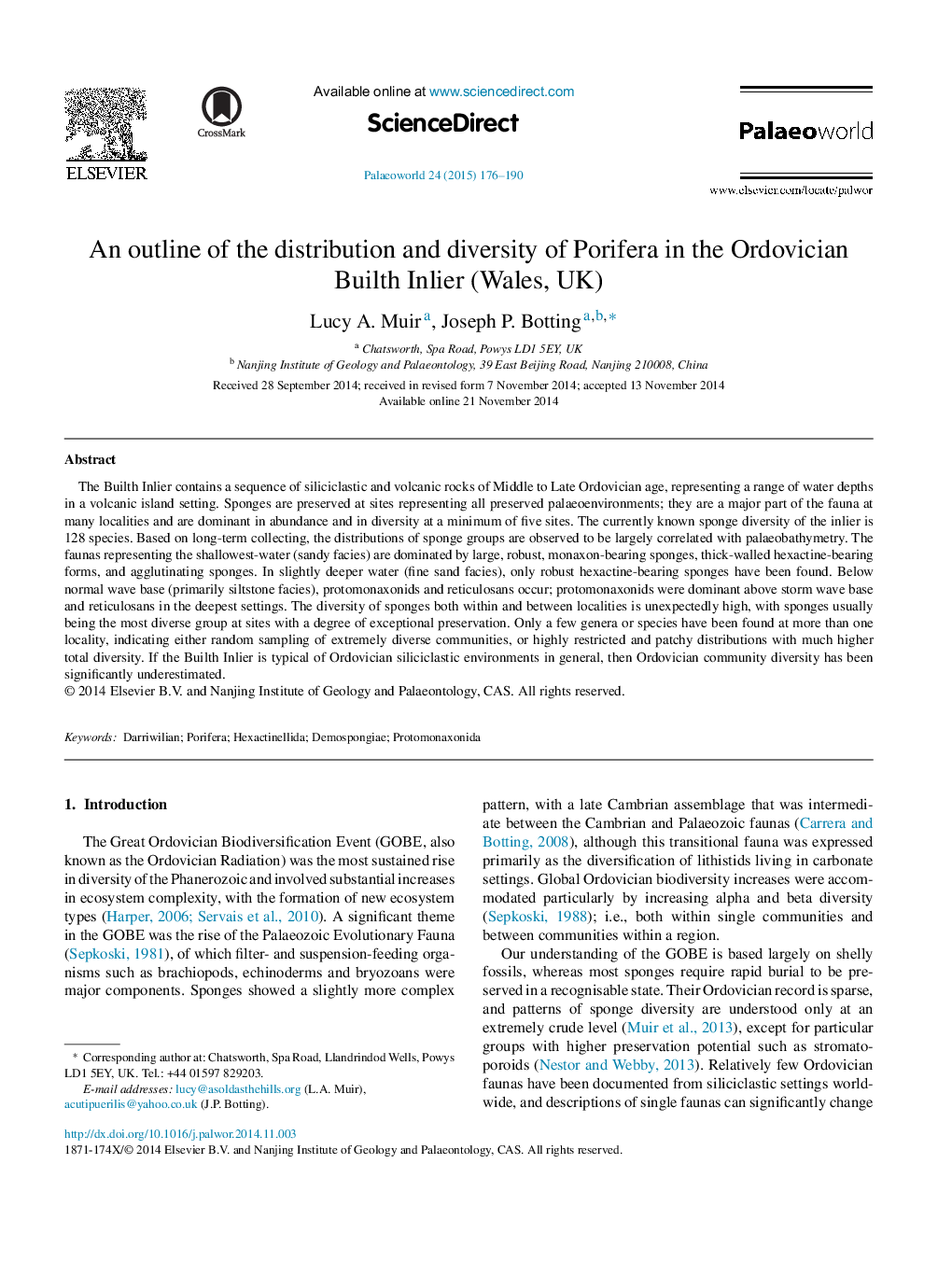| Article ID | Journal | Published Year | Pages | File Type |
|---|---|---|---|---|
| 4749631 | Palaeoworld | 2015 | 15 Pages |
The Builth Inlier contains a sequence of siliciclastic and volcanic rocks of Middle to Late Ordovician age, representing a range of water depths in a volcanic island setting. Sponges are preserved at sites representing all preserved palaeoenvironments; they are a major part of the fauna at many localities and are dominant in abundance and in diversity at a minimum of five sites. The currently known sponge diversity of the inlier is 128 species. Based on long-term collecting, the distributions of sponge groups are observed to be largely correlated with palaeobathymetry. The faunas representing the shallowest-water (sandy facies) are dominated by large, robust, monaxon-bearing sponges, thick-walled hexactine-bearing forms, and agglutinating sponges. In slightly deeper water (fine sand facies), only robust hexactine-bearing sponges have been found. Below normal wave base (primarily siltstone facies), protomonaxonids and reticulosans occur; protomonaxonids were dominant above storm wave base and reticulosans in the deepest settings. The diversity of sponges both within and between localities is unexpectedly high, with sponges usually being the most diverse group at sites with a degree of exceptional preservation. Only a few genera or species have been found at more than one locality, indicating either random sampling of extremely diverse communities, or highly restricted and patchy distributions with much higher total diversity. If the Builth Inlier is typical of Ordovician siliciclastic environments in general, then Ordovician community diversity has been significantly underestimated.
